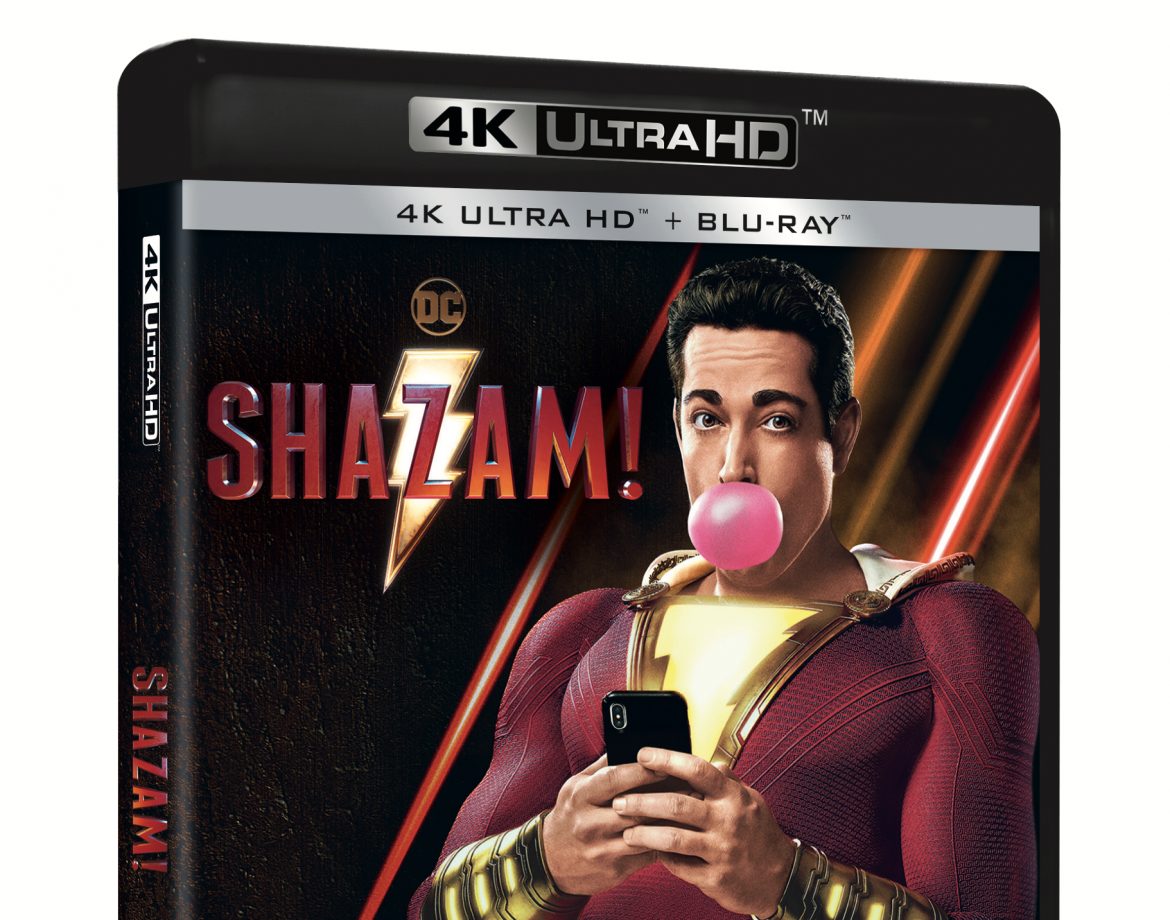TL;DR
Shazam! is a fun, coming-of-age superhero flick that captures a lighter DC vibe, thanks to director David F. Sandberg. Zachary Levi shines as the superhero in a kid's body, supported by a great performance from Jack Dylan Grazer as his friend. The UHD version offers stunning visuals with Dolby Vision, especially in dark scenes, though some edge details can be soft. The Dolby Atmos sound is immersive and impactful. While extras are a bit light, the film's overall charm and heartfelt performances make it a solid entry, despite a slightly predictable villain and a few physics-defying moments. Discover if this superhero adventure is worth your time – dive into the full review!
David F. Sandberg (not to be confused with David ”Kung Fury” Sandberg) gained recognition for his impressive short film, Lights out. This concise, three-minute piece served as his entry into Hollywood. Following a feature film adaptation of Lights Out and a contribution to the Annabelle series, he was selected to helm Shazam!, bringing a vibrant and lighter tone to the DC Comics universe.
Billy Batson (Asher Angel) is depicted as an orphaned teenager navigating the foster care system while searching for his missing mother. During a subway ride, he is summoned by an ancient wizard (Djimon Hounsou) who bestows upon him incredible powers. By uttering the word “Shazam!”, Billy transforms into a fully-grown superhero (Zachary Levi). With the support of his friend Freddy Freeman (Jack Dylan Grazer), Billy endeavors to master his newfound abilities. Their efforts are challenged when the villainous Dr. Sivana (Mark Strong) seeks to steal Shazam’s power.
Many will recall the TV series Greatest American Hero (or Titta han flyger! in Swedish) starring William Katt, evoking childhood aspirations of possessing superpowers. Shazam! successfully balances elements of a coming-of-age film with those of a superhero narrative, largely due to David F. Sandberg’s assured direction. The film adeptly navigates a precarious balance, avoiding common pitfalls within the genre.
The UHD edition offers a technically sound presentation. Given the film’s reliance on visual effects, the 2K master benefits from a quality transfer to 4K. The implementation of dynamic HDR, specifically Dolby Vision, enhances detail across various scenes and environments. This is particularly noticeable in nighttime sequences, such as those set during Christmas, where the luminosity showcases the enhanced capabilities of the 4K format compared to standard Full HD (e.g., on Blu-ray). A minor drawback is the presence of digital antialiasing, which is subtly apparent in fine details at the periphery, resulting in a slight softening or blurring effect on thin lines.
The sound design, presented in Dolby Atmos, is befitting of a superhero film. Drawing inspiration from iconic scores such as John Williams’ Superman soundtrack, the audio creates an immersive and engaging experience. The soundscape prioritizes movement across the front channels, complemented by a consistently present bass frequency that adds weight and impact. Certain antagonists introduced later in the film feature voices that reverberate and pan around the listener in a compelling manner. The climactic battle sequence serves as an excellent demonstration of the UHD format’s impressive audio and visual fidelity.
The included extras are somewhat limited, consisting primarily of standard “featurettes” promotional videos. These provide adequate entertainment, with the behind-the-scenes look at the final scene being a highlight. However, the selection lacks depth, and the absence of a commentary track by Sandberg is regrettable, as his insights would likely be valuable. The animated comic book is a fun, albeit brief, addition.
Asher Angel delivers a compelling performance as Billy Batson, embodying both the necessary rebellious attitude and a vulnerable side, adding depth to the character.
Zachary Levi gained prominence in the TV series Chuck. His portrayal of Shazam!, a boy inhabiting an adult’s body, is well-suited to his talents. Levi successfully embodies the superhero physique and manages to make the character’s outlandish costume believable.
Jack Dylan Grazer’s portrayal of Freddie Freeman showcases his emerging talent. His casting is critical to the film’s success, as a less capable actor could have detracted from the role. Grazer creates a nuanced character, making him a highly engaging presence on screen.
A relative weakness of Shazam! lies in the casting of Mark Strong as the villain. While his performance is not inherently flawed, it closely mirrors his previous roles in films such as Kick Ass and Sherlock Holmes. This presented an opportunity to cast a fresh face in the villainous role, particularly given the character’s established backstory. Ultimately, director Sandberg (or the studio) opted for a familiar choice. This is a minor disappointment in an otherwise well-cast film.
Richard Donner’s Superman: The Movie from 1978 remains a benchmark for superhero films. Donner’s vision prioritized realism, with Superman being the sole extraordinary element. Shazam! generally adheres to this principle, but a specific sequence involving a bus deviates significantly and detrimentally. The physics of the bus’s fall are unrealistic, and Shazam!’s catching the bus with the windshield is jarring. This moment undermines the film’s established tone and veers into cartoonish territory.
Overall, Shazam! stands out as a highlight among recent DC Comics films. While the competition may not be particularly strong, considering the middling reception of Aquaman, Shazam! offers consistent entertainment value, despite its imperfections. Furthermore, David F. Sandberg has subtly incorporated Swedish elements and included his humorous short film Vad tyst det blev as a hidden bonus.

